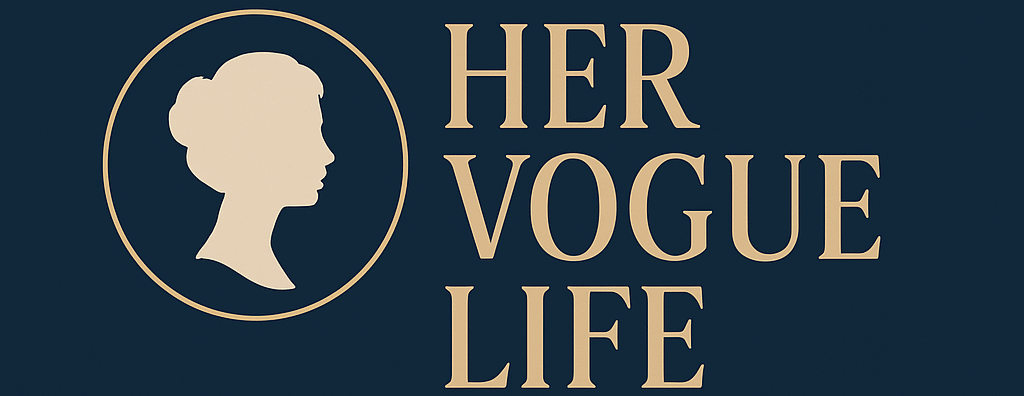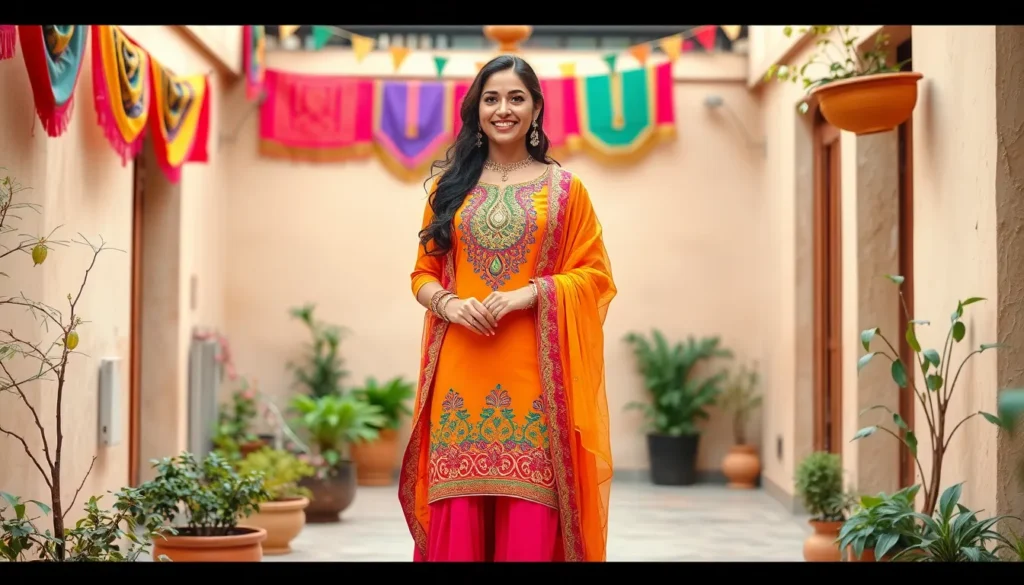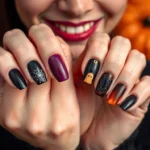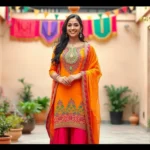The 3-piece dress has revolutionized how we approach traditional Indian fashion. This versatile ensemble combines the elegance of a kurta top with matching bottoms and a coordinating dupatta to create a complete look that’s both sophisticated and effortlessly stylish.
We’ve watched this trend transform from a simple wardrobe staple into a fashion statement that works for every occasion. Whether you’re attending a wedding celebration or heading to the office, these coordinated sets offer the perfect balance of comfort and cultural authenticity that modern women crave.
What makes the 3-piece dress particularly appealing is its incredible versatility. You can mix and match the pieces to create multiple outfits from a single purchase, making it an incredibly smart investment for your wardrobe. From vibrant festival colors to subtle everyday hues, we’ll explore how these stunning ensembles can elevate your style game while honoring traditional Indian aesthetics.
Understanding the Traditional 3 Piece Indian Dress for Women
Traditional Indian women’s attire represents centuries of cultural artistry and regional craftsmanship. We explore how this timeless ensemble continues to define elegance in contemporary fashion.
Cultural Significance and Heritage
Regional variations of the 3 piece dress showcase India’s diverse textile traditions across different states. Northern regions like Punjab favor vibrant salwar kameez combinations with heavy embroidery, while Gujarat celebrates mirror work and colorful bandhani prints. Bengali women traditionally wear kurta sets with intricate kantha stitching, and Rajasthani styles feature bold block prints and gota work.
Religious ceremonies and festivals deeply connect with exact 3 piece dress styles that honor cultural customs. Wedding celebrations often require heavily embellished suits with gold threadwork, while daily prayers call for simple cotton sets in auspicious colors. Festival wear includes bright yellows for Basant Panchami, reds for Karva Chauth, and whites for Navratri celebrations.
Generational knowledge passes down through families as mothers teach daughters the art of selecting appropriate fabrics and cuts. Grandmothers share stories about hand-woven textiles and traditional dyeing techniques while explaining the symbolism behind different patterns. Family heirloom pieces often feature ancestral embroidery methods that represent exact regional communities.
Modern Adaptations of Classic Styles
Contemporary designers blend traditional silhouettes with modern cuts to create workplace-appropriate 3 piece dress options. Straight-cut kurtas replace flowing styles for professional settings, while ankle-length pants substitute for traditional salwars. Office-friendly versions feature subtle prints and solid colors that maintain cultural authenticity without overwhelming corporate environments.
Fusion elements incorporate Western tailoring techniques into classic Indian patterns for younger demographics. Asymmetrical hemlines add modern flair to traditional kurtas, while contemporary necklines like boat necks and off-shoulder designs update classic looks. International fashion weeks now showcase Indo-Western 3 piece collections that appeal to global audiences.
Sustainable fashion movements emphasize handloom fabrics and natural dyes in modern 3 piece dress construction. Eco-conscious brands promote organic cotton, hemp, and bamboo fibers while supporting local artisan communities. Slow fashion principles encourage investing in quality pieces that last for years rather than fast fashion alternatives.
Exploring Popular 3 Piece Indian Dress Styles
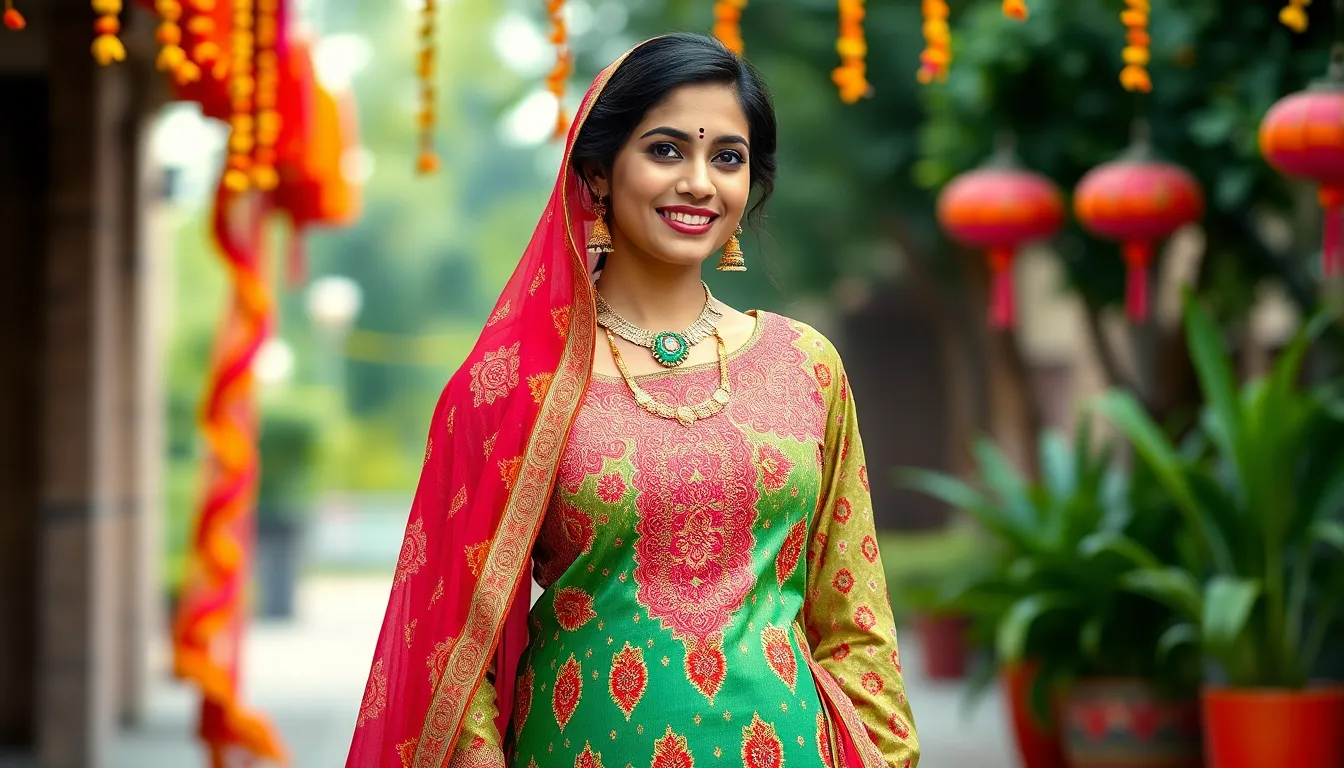
We’ve identified the most beloved traditional ensembles that continue to captivate women across generations and occasions.
Salwar Kameez with Dupatta
Salwar kameez represents the quintessential three-piece Indian outfit that combines comfort with timeless elegance. This versatile ensemble features a kameez (tunic top), salwar (loose-fitting pants), and dupatta (long scarf) that drapes gracefully over the shoulders. We love how this traditional set suits various occasions, from daily wear to festive celebrations, making it a true wardrobe staple.
Different styling options include straight-cut designs for a sleek look, flowing Anarkali patterns for formal events, fitted churidar styles, and comfortable patiala variations. Fabric choices range from breathable cotton for everyday wear to luxurious silk and flowing georgette for special occasions. The dupatta serves as the finishing touch that elevates the entire look while providing cultural authenticity.
Lehenga Choli with Dupatta
Lehenga choli stands as the epitome of Indian bridal and festive wear, featuring a dramatic flared skirt, fitted blouse, and elegant dupatta combination. This ornate three-piece ensemble captures attention with its heavily embroidered details and embellished designs that create a truly regal appearance. We see this outfit dominating weddings, engagements, and major festivals where opulence takes center stage.
The long, voluminous lehenga creates a stunning silhouette while the fitted choli provides a flattering contrast. North Indian traditions particularly embrace this style, though its popularity has spread globally among fashion enthusiasts. The dupatta adds movement and grace when draped stylishly over the shoulders or head.
Sharara Set with Kurta
Sharara sets offer a unique silhouette with their distinctive wide-legged trousers that flare dramatically at the hem. This elegant combination includes a kurta that can range from simple designs to heavily adorned pieces, paired with the signature sharara pants and coordinating dupatta. We recommend this ensemble for weddings, parties, and festive gatherings where you want to make a statement.
The flowing nature of sharara pants creates an elegant movement that’s both comfortable and visually striking. Kurta lengths vary from short contemporary styles to longer traditional cuts, allowing for personalization based on preference and occasion. The dupatta completes the look by either matching the set or providing a beautiful contrast.
Gharara with Short Kurti
Gharara sets create a distinctive royal aesthetic with their characteristic wide-legged pants that feature dramatic ruffles at the knee area. This traditional ensemble pairs a short kurti with the statement gharara trousers and an accompanying dupatta for a complete look. We notice this style holds special significance in Muslim communities for weddings and religious celebrations.
The short kurti length perfectly balances the voluminous gharara silhouette, while the knee ruffles add texture and visual interest. This regal combination offers both comfort and cultural authenticity for special occasions. The dupatta’s versatility allows for creative draping styles that enhance the overall dramatic effect of the gharara’s unique design.
Choosing the Right Fabric for Your 3 Piece Indian Dress
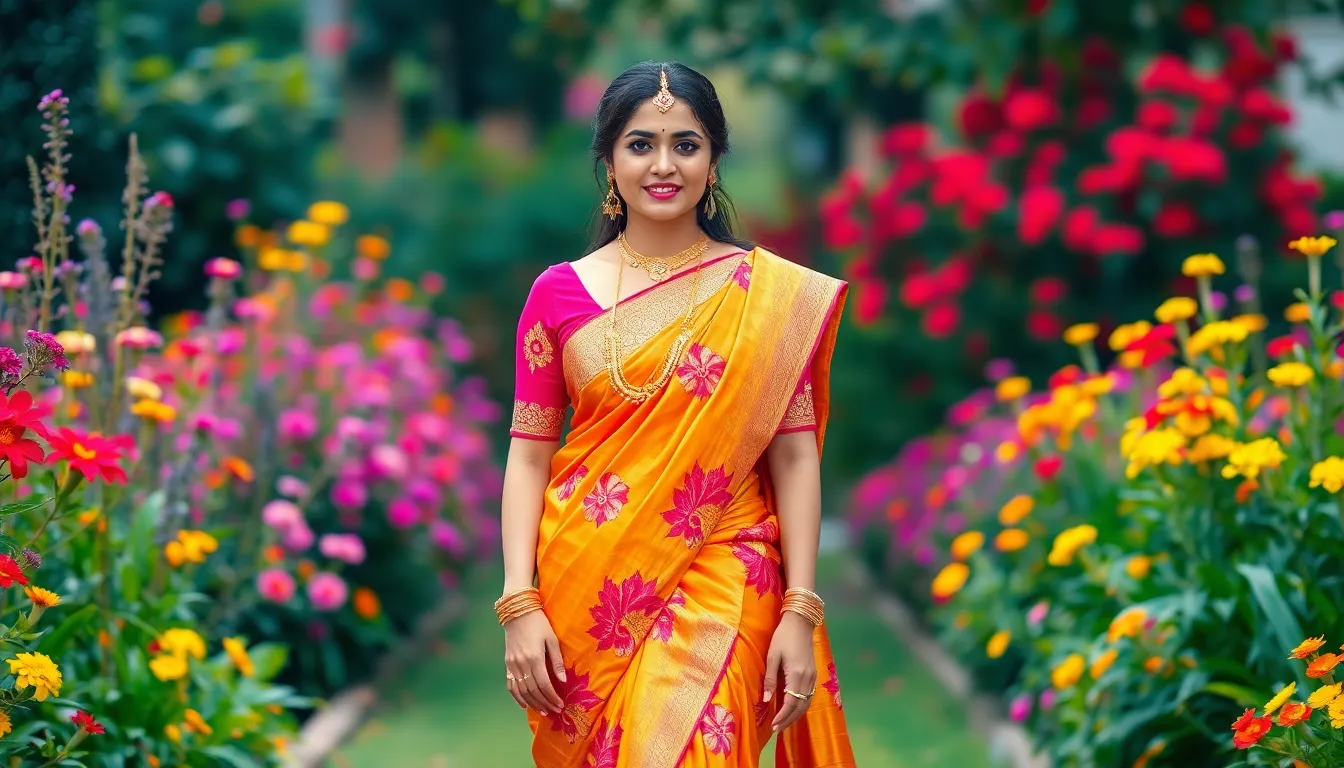
Selecting the perfect fabric transforms your 3 piece Indian dress experience from ordinary to extraordinary. We’ll guide you through the most popular fabric choices that complement traditional silhouettes while meeting your comfort and style needs.
Cotton for Everyday Comfort
Cotton stands as our top recommendation for daily wear 3 piece Indian suits due to its breathable and soft qualities. This natural fabric offers exceptional comfort in warm climates through its moisture wicking properties, making it ideal for office wear or casual outings. Maintenance becomes effortless with cotton, as it withstands regular washing while maintaining its shape and color. We particularly love how cotton kurtas paired with matching bottoms create polished looks for professional settings without compromising on comfort throughout long workdays.
Silk for Special Occasions
Silk elevates any 3 piece Indian dress into luxury territory, making it our fabric of choice for weddings and festive celebrations. The smooth texture and natural sheen of silk create rich falls that enhance the overall elegance of kurtas, lehengas, and dupattas. Special occasions demand fabrics that photograph beautifully, and silk delivers that coveted traditional appeal with its lustrous finish. We find that silk 3 piece sets become family heirlooms, passed down through generations while maintaining their sophisticated charm and cultural significance.
Georgette for Elegant Draping
Georgette offers the perfect balance between durability and grace, featuring a semi transparent quality with distinctive grainy texture from its twisted yarns. This lightweight fabric holds pleats exceptionally well, making it excellent for flared kurtas and flowing dupattas that require structured draping. Versatility defines georgette’s appeal, as it works beautifully across sarees, suits, and other Indian outfits while remaining easier to maintain than delicate alternatives. We appreciate how georgette’s thickness provides more durability than chiffon while still delivering that elegant, professional look suitable for both formal events and semi casual gatherings.
Chiffon for Lightweight Appeal
Chiffon creates the most ethereal and romantic effect in 3 piece Indian dresses through its sheer, flowy characteristics and smooth silky texture. The lightweight nature of this fabric allows for more fluid draping, making it ideal for layered kurtas or airy dupattas that need graceful movement. Delicate handling becomes necessary with chiffon, but the resulting romantic and graceful effect justifies the extra care required. We recommend chiffon for special evening events where the dress needs to create a dreamy, floating appearance, though it’s less durable and more fragile compared to georgette options.
Essential Styling Tips for 3 Piece Indian Dresses
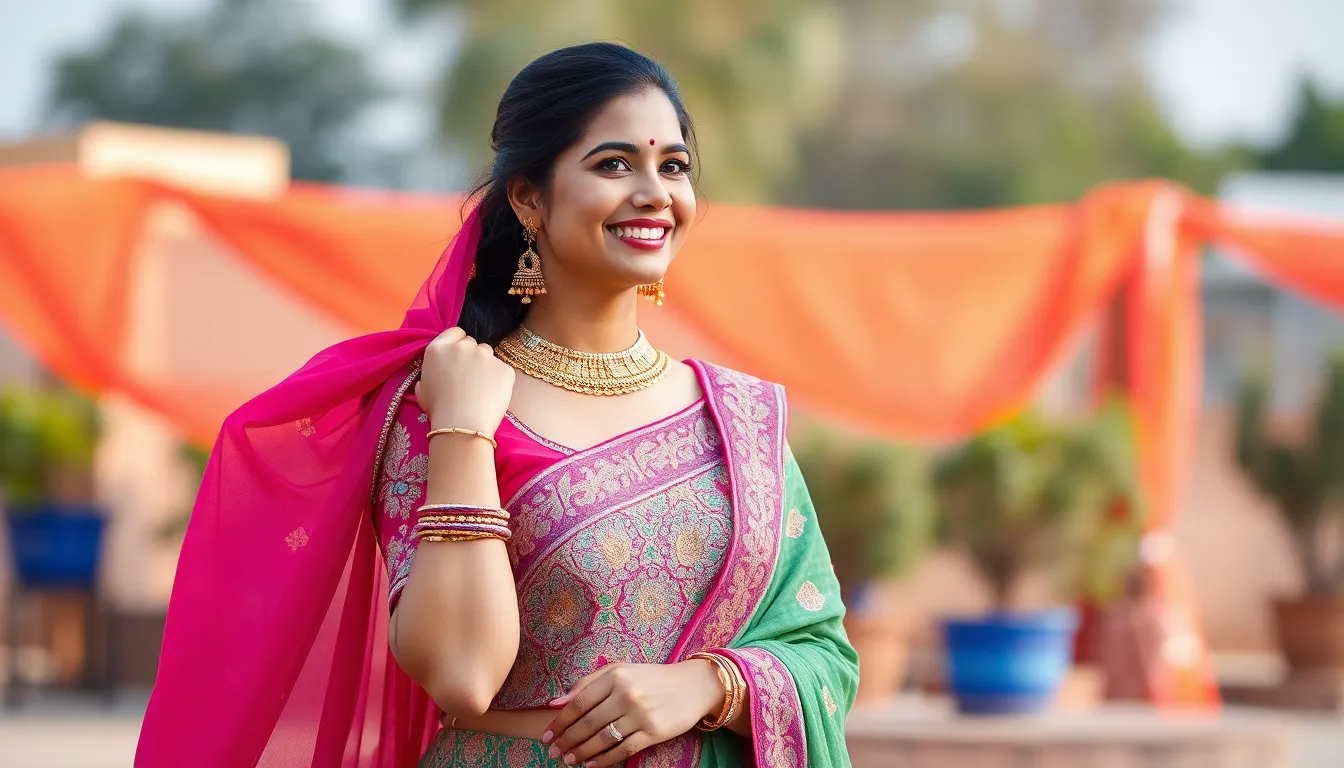
Mastering the art of styling a 3 piece Indian dress transforms your traditional ensemble from ordinary to extraordinary. We’ll share expert techniques that elevate your look while honoring the cultural beauty of these timeless garments.
Accessorizing with Traditional Jewelry
Traditional jewelry serves as the perfect complement to your 3 piece Indian dress, adding intricate details that enhance the overall aesthetic. We recommend selecting pieces like delicate bangles, statement earrings, and ornate necklaces that harmonize with your outfit’s embellishments and color palette.
Bangles create beautiful movement and sound as you walk, while earrings frame your face and draw attention to the neckline of your kurta or blouse. A well chosen necklace bridges the gap between your dupatta and top, creating visual continuity throughout your ensemble.
Modern touches can refresh traditional looks without losing their authentic charm. We suggest incorporating contemporary statement pieces that blend seamlessly with classic designs, creating a balanced fusion that feels both timeless and current.
Selecting Appropriate Footwear
Footwear selection plays a crucial role in completing your 3 piece Indian dress ensemble while ensuring comfort throughout your event. Traditional occasions call for juttis or embellished sandals that complement your outfit’s colors and mirror its decorative elements.
Juttis offer authentic style with their pointed toes and intricate embroidery, making them perfect for weddings and festivals. These traditional shoes provide the right amount of formality while maintaining cultural authenticity in your overall look.
Casual events allow for more flexibility in footwear choices, where comfortable flats or simple sandals work beautifully. We recommend selecting shoes in neutral tones or colors that echo your dupatta’s hues for a cohesive appearance.
Dupatta Draping Techniques
Dupatta draping transforms the entire silhouette of your 3 piece Indian dress, offering countless ways to express personal style. Cape style draping creates a modern, sophisticated look by allowing the dupatta to flow gracefully over both shoulders like a fashionable wrap.
Khada dupatta draping brings traditional elegance to formal occasions, where the fabric stands prominently and frames your outfit with regal presence. This technique works especially well for lehenga cholis and creates stunning photogenic moments.
Front draping across one shoulder offers versatility for both casual and semi formal events. We find this style particularly flattering as it showcases the dupatta’s design while keeping one arm free for comfortable movement.
Color Coordination Guidelines
Color coordination creates visual harmony that ties your entire 3 piece Indian dress together into a stunning, cohesive look. Harmonious colors work beautifully when you select shades that naturally complement each other and suit both the occasion and your personal style preferences.
Contrasting colors add ever-changing visual interest and create bold, eye catching combinations that make powerful style statements. We recommend pairing deep jewel tones with lighter complementary shades or choosing colors from opposite sides of the color wheel for maximum impact.
Monochromatic schemes offer sophisticated elegance by using different shades of the same color family throughout your ensemble. This approach creates depth and richness while maintaining a refined, polished appearance that works for both traditional and contemporary settings.
Occasions Perfect for 3 Piece Indian Dresses
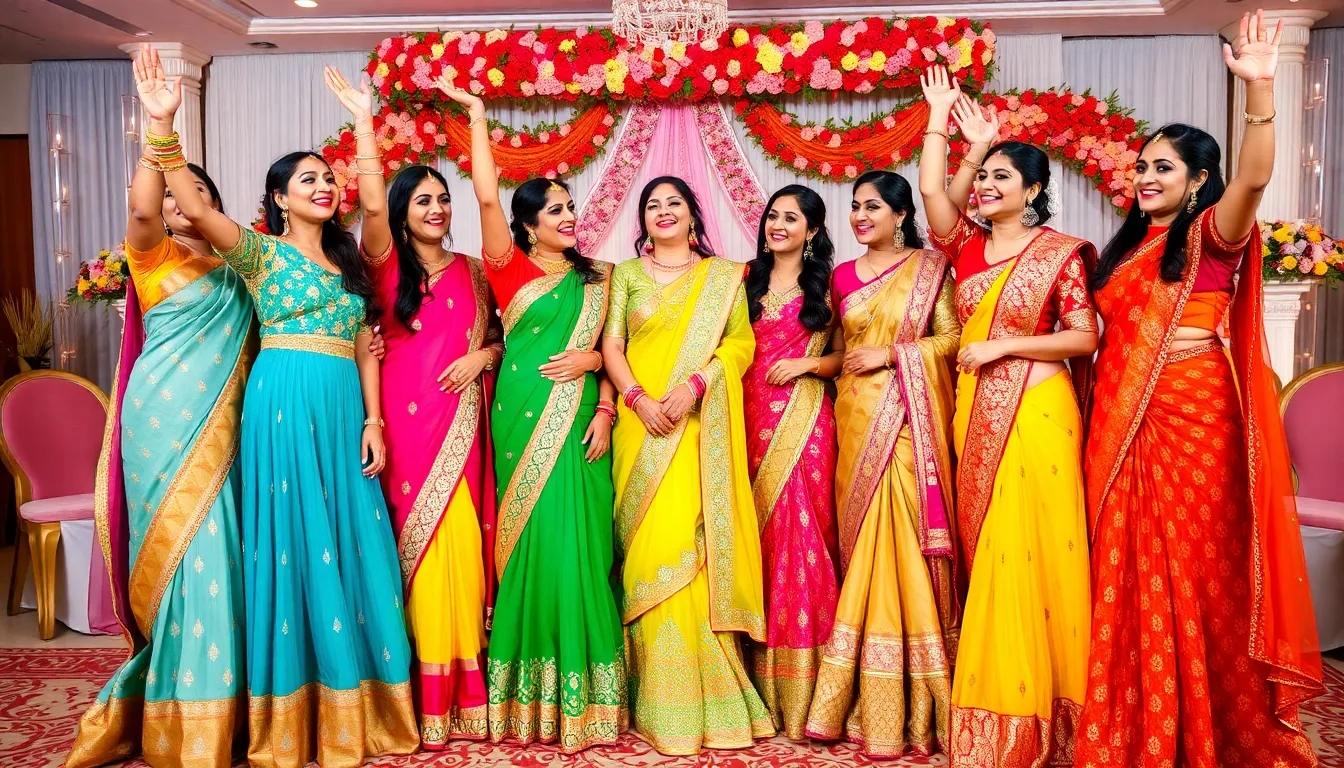
Building on our styling foundation, we’ll explore the versatile occasions where these traditional ensembles truly shine. Each setting brings unique opportunities to showcase the elegance and cultural richness of 3 piece Indian dresses.
Wedding Celebrations and Ceremonies
Wedding celebrations demand the ultimate expression of traditional elegance, making Anarkali suits and ornate sharara sets the perfect choice for these momentous occasions. We recommend selecting designs with intricate embellishments and luxurious fabrics that honor the ceremonial significance while ensuring you look stunning throughout the festivities.
Bridal parties particularly benefit from coordinated 3 piece ensembles that complement the wedding’s color palette. Family members often choose matching or complementary designs that create visual harmony in photographs while maintaining individual style preferences.
Sangeet ceremonies call for outfits that allow graceful movement during traditional dances, making flowing Anarkali silhouettes ideal. We suggest choosing fabrics like georgette or silk that drape beautifully and catch the light as you celebrate.
Reception events provide opportunities to showcase more contemporary variations of 3 piece dresses, blending traditional elements with modern sophistication for evening celebrations.
Festival Gatherings and Religious Events
Festival celebrations like Diwali and Holi showcase the cultural significance of 3 piece Indian dresses through their intricate designs and festive colors. We often see families coordinating their outfits with traditional motifs and bright hues that reflect the joy and spiritual meaning of these occasions.
Religious ceremonies require modest yet beautiful attire that respects cultural traditions while allowing comfortable participation in rituals. Cotton and silk 3 piece sets work exceptionally well for temple visits and prayer gatherings.
Karva Chauth and similar observances call for special attention to traditional styling, where the dupatta plays a crucial role in the ceremonial aspects of the celebration.
Eid festivities often feature 3 piece ensembles in elegant pastels or rich jewel tones, creating the perfect balance between festive spirit and religious reverence.
Formal Office Wear Options
Professional settings benefit from simpler 3 piece designs in sophisticated fabrics like cotton or georgette that maintain cultural identity while meeting workplace standards. We recommend choosing subtle colors and minimal embellishments for daily office wear.
Corporate events allow for slightly more ornate variations, where you can incorporate traditional elements without overwhelming the professional atmosphere.
Business meetings in cultural or traditional sectors particularly welcome 3 piece Indian dresses as they demonstrate cultural awareness and professional polish simultaneously.
Conference presentations can be enhanced by well customized 3 piece sets that project confidence while honoring traditional aesthetics in professional environments.
Casual Day Out Styling
Casual outings with friends and family become more enjoyable when you’re wearing comfortable Indo Western 3 piece sets that can be styled down with contemporary accessories. We love pairing these ensembles with sneakers or casual sandals for relaxed elegance.
Shopping trips and mall visits work perfectly with lightweight 3 piece combinations that offer comfort and style throughout long days of walking and browsing.
Lunch dates provide ideal opportunities to experiment with fusion styling, mixing traditional pieces with modern accessories for a fresh, approachable look.
Weekend gatherings call for effortless 3 piece styling that transitions easily from day to evening, allowing you to feel put together without being overdressed for casual social events.
Shopping Guide for 3 Piece Indian Dresses
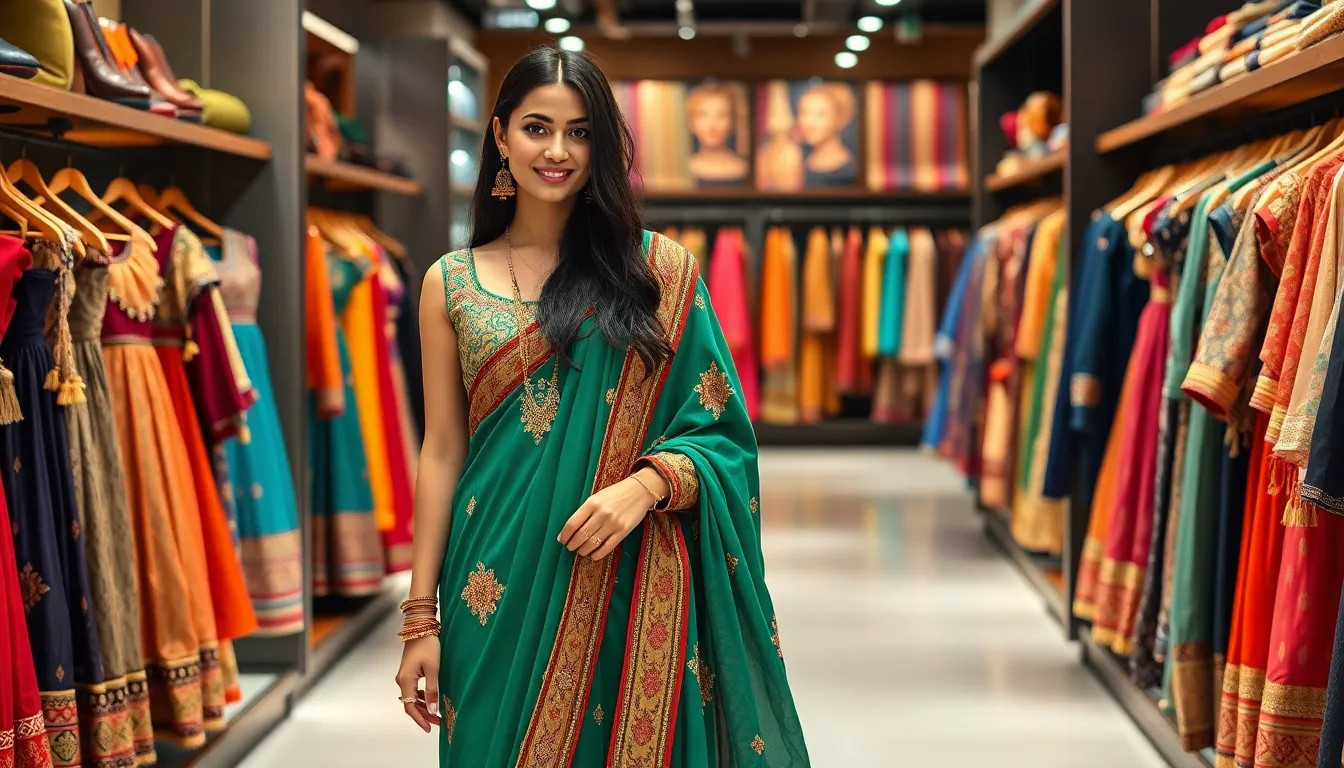
Handling the industry of 3 piece Indian dresses becomes simpler when you understand the key shopping considerations. We’ll explore the most effective approaches to finding your perfect ensemble.
Online vs In-Store Shopping Benefits
Online Shopping offers unparalleled access to vast collections from designers across the US and globally. We can filter options by size, color, price, and occasion while enjoying secure payment methods and convenient home delivery. Popular platforms like Palkhi Fashion and Panash India provide extensive 3 piece dress collections with prompt delivery services.
In-Store Shopping allows us to try on outfits for proper fit and comfort assessment. We receive immediate expert assistance and can make instant purchases without waiting for delivery. Physical stores let us examine fabric quality, embroidery details, and color accuracy firsthand.
Digital platforms excel in variety and convenience, while brick and mortar stores provide tactile experiences and immediate gratification.
Size Chart and Measurement Tips
Standard Indian Sizes require precise measurements using a flexible measuring tape for bust, waist, hip, and length dimensions. We recommend recording these measurements in both inches and centimeters for accuracy.
Conversion Charts help translate US sizes to Indian sizing standards, though each retailer may have slight variations. Most online stores offer dedicated US to Indian size converters for 3 piece dress selections.
Best Practice involves checking the exact retailer’s size guide before purchasing, as measurements can vary between brands and designers. Custom tailoring options often require additional measurements for sleeve length, shoulder width, and dupatta preferences.
Budget-Friendly Options
Sales and Promotions frequently appear on online retailers specializing in Indian dresses, offering important discounts on 3 piece ensembles. We can subscribe to newsletters from platforms like Palkhi Fashion to receive exclusive promotional codes.
Ready-Made Collections provide more affordable alternatives compared to custom or designer outfits while maintaining quality and style standards. These pieces often feature standardized sizing and faster delivery times.
Generic Fabrics like cotton, polyester, and georgette typically cost less than premium materials such as silk or designer embellished fabrics. We can achieve stunning looks with these budget conscious fabric choices for everyday wear and casual occasions.
Designer vs Ready-Made Choices
Designer Outfits showcase unique embroidery, intricate handwork, and premium fabrics that justify their higher price points. These pieces often include custom tailoring services and exclusive design elements unavailable in mass market options.
Ready-Made Outfits offer standardized sizes, widespread accessibility, and cost effectiveness suitable for most budgets. We find these pieces readily available through both online platforms and physical stores with immediate purchase capabilities.
Quality considerations vary significantly between these categories, with designer pieces typically featuring superior construction and attention to detail. Ready made options provide excellent value for occasional wear and everyday styling needs.
Care and Maintenance of Your 3 Piece Indian Dress
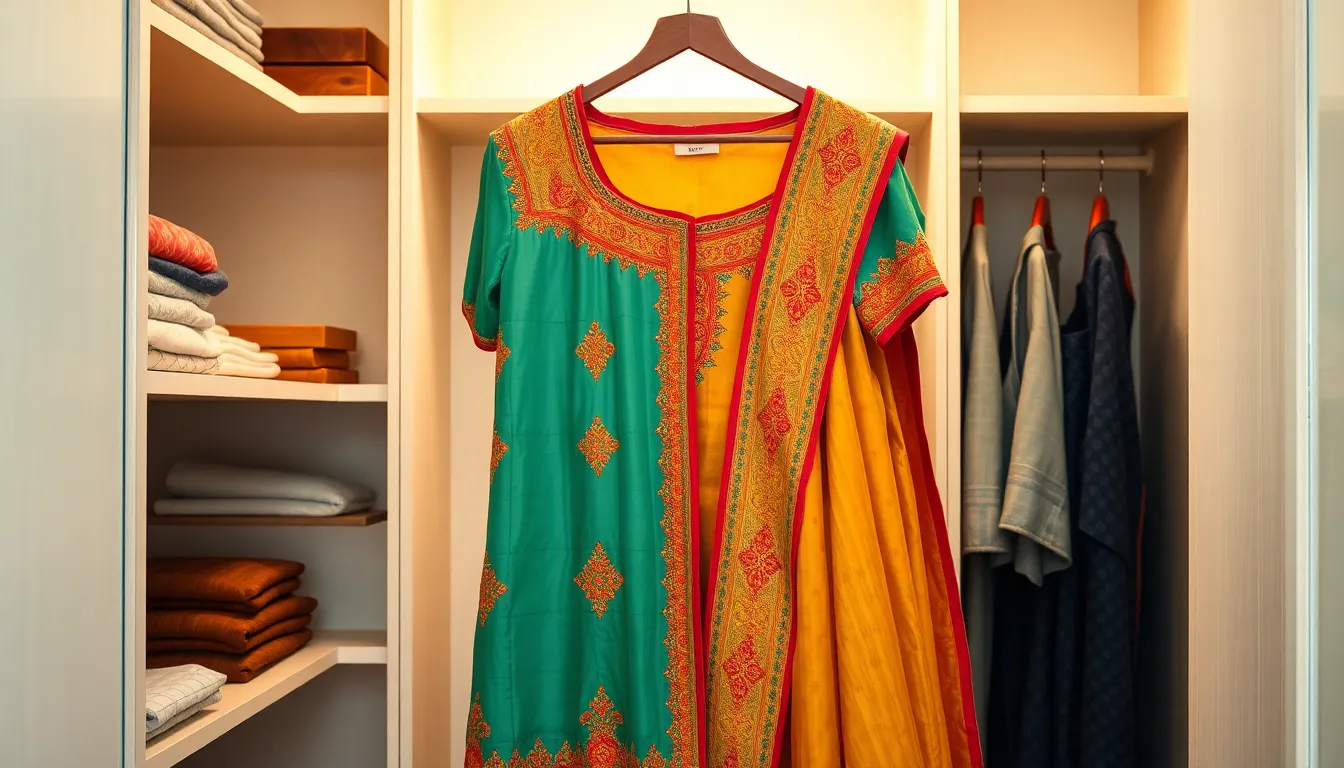
Preserving the beauty and longevity of your 3 piece Indian dress requires proper care techniques that protect delicate fabrics and intricate embellishments. We’ll guide you through essential maintenance practices that keep your traditional ensemble looking stunning for years.
Proper Washing Techniques
Check the fabric care label first before attempting any washing method. Heavily embellished, delicate, or garments labeled “dry clean only” should never be washed with water as this can ruin the fabric or damage precious embellishments.
Machine wash cotton pieces on a gentle cycle using cold water and mild, color-safe detergent. Turn your dress inside out to protect prints and embroidery from friction damage during the wash cycle.
Handwash lightly decorated dresses with mild detergent when machine washing isn’t suitable. Gently dab stained areas instead of scrubbing, especially on delicate or embroidered pieces that can easily tear.
Avoid bleach completely on Indian fabrics as it can cause irreversible color damage and weaken textile fibers. Add a tablespoon of white vinegar to the final rinse for cotton pieces to maintain color brightness and prevent fading.
Storage Answers
Store your dress in cool, dry places away from direct sunlight and humidity that can cause fabric deterioration and color fading. Excessive moisture can also lead to mold growth and unpleasant odors.
Fold carefully to prevent creasing and avoid stacking heavy items on top of delicate pieces that can create permanent marks. Use tissue paper between folds for heavily embellished areas to prevent snagging.
Hang silk or heavily embroidered garments on padded hangers if you prefer hanging storage over folding. This method prevents compression damage to delicate beadwork and sequins.
Place protective elements like naphthalene balls, silica gel, or cedar blocks inside storage areas to guard against moths and moisture. Ensure these items don’t touch the fabric directly to prevent staining or chemical damage.
Separate garments to allow air circulation and avoid storing damp clothes that can transfer moisture to other pieces. This practice prevents mildew growth and maintains fabric freshness.
Ironing and Pressing Guidelines
Iron cotton or silk dresses while slightly damp on medium heat settings to prevent scorching or creating unwanted shine marks on the fabric surface. This technique also makes wrinkle removal more effective.
Avoid ironing directly over embellishments like beads, sequins, or heavy embroidery that can melt or become damaged under high heat. Work around these areas carefully to maintain their integrity.
Use a pressing cloth on low settings for heavily decorated or delicate fabrics that require extra protection. Place the cloth between the iron and your dress to create a protective barrier.
Test on small, inconspicuous areas first before pressing the entire garment to ensure the fabric can handle the heat without damage. This precaution prevents costly mistakes on visible dress sections.
Conclusion
The 3-piece Indian dress remains an enduring symbol of elegance that seamlessly bridges tradition and modernity. We’ve explored how these versatile ensembles offer endless possibilities for expression while honoring our rich cultural heritage.
Whether you’re attending a grand celebration or seeking comfortable everyday wear these timeless outfits continue to evolve with contemporary fashion trends. The combination of traditional craftsmanship with modern styling ensures that every woman can find her perfect fit.
By following proper care techniques and styling guidelines you’ll maximize the longevity and beauty of your investment. The 3-piece dress truly represents the perfect balance of functionality sophistication and cultural pride in today’s fashion industry.
Frequently Asked Questions
What is a 3-piece Indian dress?
A 3-piece Indian dress is a traditional ensemble consisting of three coordinated components: a kurta (top), matching bottoms (like salwar, lehenga, or churidar), and a dupatta (scarf). This versatile outfit has evolved from basic wardrobe staples into fashionable statements suitable for various occasions, from weddings to office wear, while maintaining its cultural significance.
What are the most popular styles of 3-piece Indian dresses?
The most popular styles include Salwar Kameez (comfortable loose pants with tunic), Lehenga Choli (flared skirt with fitted top), Sharara Set (wide-legged pants), and Gharara with Short Kurti (flared pants from the knee). Each style showcases unique regional variations and embroidery techniques, with the dupatta completing the ensemble.
Which fabric should I choose for my 3-piece Indian dress?
Cotton is ideal for everyday wear due to its breathability and easy maintenance. Silk offers luxury and elegance for special occasions. Georgette provides durability and graceful draping for formal events. Chiffon creates a lightweight, ethereal appeal perfect for evening wear, though it requires delicate handling.
How should I style my 3-piece Indian dress?
Enhance your outfit with traditional jewelry like bangles, statement earrings, and ornate necklaces. Choose appropriate footwear – juttis for traditional occasions or comfortable flats for casual events. Experiment with different dupatta draping techniques and coordinate colors for visual harmony or bold contrasts to elevate your overall look.
What occasions are suitable for wearing 3-piece Indian dresses?
These versatile outfits are perfect for wedding celebrations, festival gatherings, religious events, and professional settings. Choose ornate designs for ceremonies, simpler styles for office wear, and comfortable Indo-Western variations for casual outings. They easily transition from day to evening events.
Should I shop online or in-store for 3-piece Indian dresses?
Online shopping offers wider collections and convenient delivery, while in-store shopping allows trying on outfits and immediate purchases. Consider your priorities: convenience and variety (online) versus fit assurance and instant gratification (in-store). Both options offer budget-friendly choices through sales and ready-made collections.
How do I properly care for my 3-piece Indian dress?
Always check fabric care labels before washing and avoid bleach. Store outfits properly by folding carefully and protecting against moths and moisture. Use appropriate ironing techniques for delicate fabrics and embellishments. Proper care preserves the beauty and longevity of these traditional garments.
